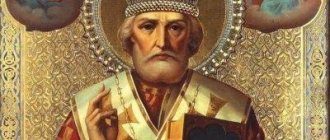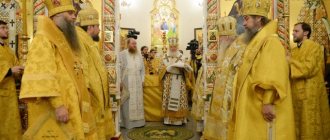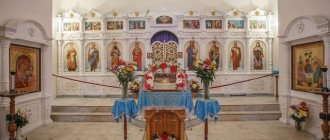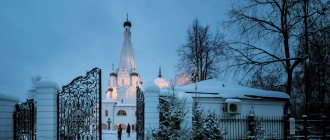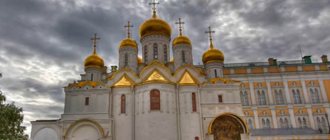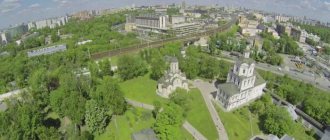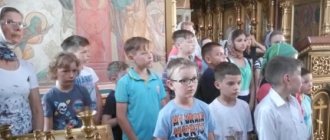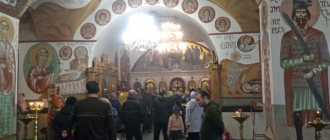Mir
Russia Moscow Church of the Nativity in Izmailovo (Moscow) Map is loading...
{"format":"leaflet","minzoom":false,"maxzoom":false,"limit":50,"offset":0,"link":"all","sort":[""], "order":[],"headers":"show","mainlabel":"","intro":"","outro":"","searchlabel":"\u2026 \u0441\u043b\u0435\ u0434\u0443\u044e\u0449\u0438\u0435 \u0440\u0435\u0437\u0443\u043b\u044c\u0442\u0430\u0442\u044b","default":"","import-annotation":false,"width ":"auto","height":"350px","centre":{"text":"","title":"""link":"""lat":55.80082999999999771034708828665316104888916015625,"lon": 37.769440000000003010427462868392467498779296875,"icon":""},"title":"","label":"","icon":"","lines":[],"polygons":[],"circles":[ ],"rectangles":[],"copycoords":false,"static":false,"zoom":8,"defzoom":14,"layers":["OpenStreetMap"],"image layers":[] ,"overlays":[],"resizable":false,"fullscreen":true,"scrollwheelzoom":true,"cluster":false,"clustermaxzoom":9,"clusterzoomonclick":true,"clustermaxradius":80, "clusterspiderfy":true,"geojson":"","clicktarget":"","showtitle":true,"hidenamespace":false,"template":"","userparam":"","activeicon": "","pagelabel":false,"ajaxcoordproperty":"","ajaxquery":"","locations":[{"text":"\u003Cb\u003E\u003Ca href=\"/palomnik/%D0% A5%D1%80%D0%B0%D0%BC_%D0%A0%D0%BE%D0%B6%D0%B4%D0%B5%D1%81%D1%82%D0%B2%D0%B0_% D0%A5%D1%80%D0%B8%D1%81%D1%82%D0%BE%D0%B2%D0%B0_%D0%B2_%D0%98%D0%B7%D0%BC%D0% B0%D0%B9%D0%BB%D0%BE%D0%B2%D0%BE_(%D0%9C%D0%BE%D1%81%D0%BA%D0%B2%D0%B0)\" title =\»\u0425\u0440\u0430\u043c \u0420\u043e\u0436\u0434\u0435\u0441\u0442\u0432\u0430 \u0425\u0440\u0438\u0441\u0442\u043e\u043 2\u0430 \u0432 \u0418\ u0437\u043c\u0430\u0439\u043b\u043e\u0432\u043e (\u041c\u043e\u0441\u043a\u0432\u0430)\»\u003E\u0425\u0440\u0430\u043c \u0420 \u043e\u0436\u0434\ u0435\u0441\u0442\u0432\u0430 \u0425\u0440\u0438\u0441\u0442\u043e\u0432\u0430 \u0432 \u0418\u0437\u043c\u0430\u0439\u043b\u 043e\u0432\u043e (\u041c\u043e \u0441\u043a\u0432\u0430)\u003C/a\u003E\u003C/b\u003E\u003Chr /\u003E\u003Ca href=\"/palomnik/%D0%A1%D0%B2%D0%BE%D0% B9%D1%81%D1%82%D0%B2%D0%BE:%D0%90%D0%BD%D0%BD%D0%BE%D1%82%D0%B0%D1%86%D0%B8 %D1%8F\» title=\»\u0421\u0432\u043e\u0439\u0441\u0442\u0432\u043e:\u0410\u043d\u043d\u043e\u0442\u0430\u0446\u0438\u044f\»\u003E\ u0410\u043d\u043d\u043e\u0442\u0430\u0446\u0438\u044f\u003C/a\u003E: \u043f\u0440\u0430\u0432\u043e\u0441\u043b\u0430\u0432\ u043d\u044b\u0439\u0445 \u0440\u0430\u043c \u0420\u043e\u0436\u0434\u0435\u0441\u0442\u0432\u0435\u043d\u0441\u043a\u043e\u0433\u043e \u0431\u043b\ u0430\u0433\u043e\u0447\u0438 \u043d\u003Cspan class=\"smw-highlighter\" data-type=\"2\" data-state=\"persistent\" data-title=\"\u0418\u043d\u0444\u043e\u0440\u043c\ u0430\u0446\u0438\u044f\" title=\"\u043f\u0440\u0430\u0432\u043e\u0441\u043b\u0430\u0432\u043d\u044b\u0439 \u0445\u0440\u0430\u04 3c\u0420\u043e\ u0436\u0434\u0435\u0441\u0442\u0432\u0435\u043d\u0441\u043a\u043e\u0433\u043e\u0431\u043b\u0430\u0433\u043e\u0447\u0438\u04 3d\u0438\u044f\u041c\u043e\ u0441\u043a\u043e\u0432\u0441\u043a\u043e\u0439 \u0435\u043f\u0430\u0440\u0445\u0438\u0438, \u043f\u0430\u043c\u044f\u0442\u 043d\u0438\u043a\u0430\u0440 \u0445\u0438\u0442\u0435\u043a\u0442\u0443\u0440\u044b. \u0426\u0435\u0440\u043a\u043e\u0432\u044c \u043e\u0441\u0432\u044f\u0449\u0435\u043d\u0430 \u0432 1676 \u0433\u043e\u0434\ u0443\u043f\u0430\u0442\u0440\ u0438\u0430\u0440\u0445\u043e\u043c \u0418\u043e\u0430\u043a\u0438\u043c\u043e\u043c, \u044f\u0432\u043b\u044f\u043b\u0430\u 0441\u044c (\u043d\u0430\ u0440\u044f\u0434\u0443 \u0441 \u041f\u043e\u043a\u0440\u043e\u0432\u0441\u043a\u043e\u0439 \u0446\u0435\u0440\u043a\u043e\u 0432\u044c\u044e\u0438\u043d\ u044b\u043d\u0435 \u0440\u0430\u0437\u0440\u0443\u0448\u0435\u043d\u043d\u043e\u0439 \u0446\u0435\u0440\u043a\u043e\u0432\u0 44c\u044e\u0446\u0430\u0440\ u0435\u0432\u0438\u0447\u0430 \u0418\u043e\u0430\u0441\u0430\u0444\u0430) \u0445\u0440\u0430\u043c\u043e\u043c \u0446\u0430\ u0440\u0441\u043a\u043e\u0439 \u0440\u0435\u0437\u0438\u0434\u0435\u043d\u0446\u0438\u0438 \u0418\u0437\u043c\u0430\u0439\u043b\u043e\u0432\u043e.\"\u003 E\u003Cspan class=\»smwtext \"\u003E\u2026 \u003C/span\u003E\u003Cspan class=\"smwttcontent\"\u003E\u043f\u0440\u0430\u0432\u043e\u0441\u043b\u0430\u0432\u043d\u044b \u0439 \u0445\ u0440\u0430\u043c \u0420\u043e\u0436\u0434\u0435\u0441\u0442\u0432\u0435\u043d\u0441\u043a\u043e\u0433\u043e \u0431\u043b\u0 430\u0433\u043e\u0447\u0438\ u043d\u0438\u044f \u041c\u043e\u0441\u043a\u043e\u0432\u0441\u043a\u043e\u0439 \u0435\u043f\u0430\u0440\u0445\u0438\u0438, \ u043f\u0430\u043c\u044f\u0442 \u043d\u0438\u043a \u0430\u0440\u0445\u0438\u0442\u0435\u043a\u0442\u0443\u0440\u044b. \u0426\u0435\u0440\u043a\u043e\u0432\u044c \u043e\u0441\u0432\u044f\u0449\u0435\u043d\u0430 \u0432 1676 \u0433\u043e\u0434\ u0443\u043f\u0430\u0442\u0440\ u0438\u0430\u0440\u0445\u043e\u043c \u0418\u043e\u0430\u043a\u0438\u043c\u043e\u043c, \u044f\u0432\u043b\u044f\u043b\u0430\u 0441\u044c (\u043d\u0430\ u0440\u044f\u0434\u0443 \u0441 \u041f\u043e\u043a\u0440\u043e\u0432\u0441\u043a\u043e\u0439 \u0446\u0435\u0440\u043a\u043e\u 0432\u044c\u044e\u0438\u043d\ u044b\u043d\u0435 \u0440\u0430\u0437\u0440\u0443\u0448\u0435\u043d\u043d\u043e\u0439 \u0446\u0435\u0440\u043a\u043e\u0432\u0 44c\u044e\u0446\u0430\u0440\ u0435\u0432\u0438\u0447\u0430 \u0418\u043e\u0430\u0441\u0430\u0444\u0430) \u0445\u0440\u0430\u043c\u043e\u043c \u0446\u0430\ u0440\u0441\u043a\u043e\u0439 > span\u003E\u003C/span\ u003E\u0441\u0430\u0444\u0430) \u0445\u0440\u0430\u043c\u043e\u043c \u0446\u0430\u0440\u0441\u043a\u043e\u0439 \u0440\u0435\ u0437\u0438\u0434\u0435\u043d \u0446\u0438\u0438 \u0418\u0437\u043c\u0430\u0439\u043b\u043e\u0432\u043e.","title":"\u0425\u0440\u0430\u043c \u0420\u043e\u0436 \u0434\u0435 \u0441\u0442\u0432\u0430 \u0425\u0440\u0438\u0441\u0442\u043e\u0432\u0430 \u0432 \u0418\u0437\u043c\u0430\u0439\u043b\u043e \u0432\u043e (\u041c\u043e\ u0441\u043a\u0432\u0430)","link":"","lat":55.80082999999999771034708828665316104888916015625,"lon":37.7694400000000030104274628683924 67498779296875,"icon":""}],"imageLayers":[]}
55.800828; 37.769639
Russia, Moscow, Izmailovsky proezd, 28
Moscow
Russia
Phones:
8–499–164–28–77 (temple), 8–499–166–18–20 (house).
Telephone:
8-499-164-28-77
Email:
Church of the Nativity in Izmailovo
- Orthodox Church of the Nativity Deanery of the Moscow Diocese, an architectural monument. The church was consecrated in 1676 by Patriarch Joachim and was (along with the Church of the Intercession and the now destroyed Church of Tsarevich Joasaph) the temple of the royal residence of Izmailovo.
Church of the Nativity in Izmailovo
The blessed letter for the construction of the stone Church of the Nativity of Christ in Izmailovo was issued by His Holiness Patriarch of Moscow and All Rus' Joachim on September 16, 1676. The Russian State Archive of Ancient Acts contains a fragment of a charter column. Attached to it is the red wax seal of Patriarch Joachim with the image of a blessing hand. Already at the end of 1678, the church was completely completed and consecrated with the rite of the Great Consecration.
To this day there is a beautiful building - the Orthodox Church of the Nativity Deanery of the Moscow Diocese. It is an object of cultural heritage of the Russian Federation. It was not destroyed by time, people did not wipe it off the face of the earth. Moreover, it never closed. Here the Divine Liturgy was and is constantly served, the sacrament of the Eucharist is celebrated, in which bread and wine are transformed into the Body and Blood of Christ. “The Lord will forever be slain for our sake” (canon for Holy Communion, canto 9). That is, everything for which churches were built at all times never died here.
The thread connecting five centuries can be seen in the architectural elements: in the main building in the style of Russian patterns and a little later, the Baroque bell tower with a porch was erected. In the pristine splendor of the interior decoration, in icons painted in different years, in church utensils, in vestments, in frames. And also in the fates of parishioners and trustees, from royalty and priests to ordinary laymen. They are like knots on this thread that prevent it from breaking.
Current state[edit]
Description[edit]
Interior decoration
The temple is an architectural monument. Built by a team of Kostroma architects on the site of a temporary wooden church. It has three tiers of kokoshniks and five chapters. Single-domed cubic aisles adjoin the main volume of the temple from the north and south. At the end of the 17th century, a two-pillar chamber was added - the refectory part of the temple, and at the beginning of the 18th century a baroque bell tower and a porch were added. Three iconostases of the temple were also created by a Kostroma master (Sergiy Rozhkov) in 1678. In 1735, by order of Anna Ioannovna, the icons were renewed (by the guild icon painter F. Piskulin), and in the middle of the 19th century, iconostases and icon cases were decorated with carvings.
Activities of the parish[edit]
- Sunday School
The Sunday school was opened with the blessing of the rector, Archpriest Leonid Roldugin, in September 1991.
Phones:
8–499–164–28–77 (temple), 8–499–166–18–20 (house).
There are 5 age groups in Sunday School. The total number of students is 33 people.
Main classes are held on Sundays from 14.30 to 16.50.
Club classes for children are held on Saturdays.
- Social work
In the Church of the Nativity of Christ in Izmailovo, social work is carried out in the following areas:
- Patronage assistance
- Interaction with medical institutions located in the district territory of the parish
- Providing transportation services to especially needy parishioners
- Providing social and humanitarian assistance to church parishioners (large families, single mothers, the poor and disabled)
- Legal and legal assistance
All activities are carried out free of charge by parishioners and clergy of our church.
- Brotherhood of Temperance
Brotherhood "Sobriety" in the name of St. Nicholas, Archbishop of Myra in Lycia, wonderworker at the Church of the Nativity of Christ in Izmailovo, Moscow. Email
,
telephone
: 8(910) 424-90-63.
History of the village of Izmailova
The village of Izmailovo already existed in the 15th century. It was located on the territory of modern Izmailovsky Island and belonged to the Grand Dukes. Tsar Alexei Mikhailovich Romanov inherited the estate from his childless uncle Nikita Ivanovich Romanov.
In 1663, the young tsar planned to create a large palace farm here: gardens, the sovereign's arable land and apiary, stables, barnyards and poultry houses, fish ponds, glass and brick factories, and a distillery. This estate was supposed to serve not only as a vacation spot for the royal family, but also for the economic needs of the royal court. To carry out the grandiose plan, peasants from Kostroma, Valdai, Pereslavl and other lands were resettled to Izmailovo.
New residents settled on the Khorugovo wasteland and formed the New Sloboda village of Izmailovo. For them, a church was later erected in honor of the Nativity of Christ with chapels of the Kazan Icon of the Mother of God and St. Nicholas of Myra. This dedication of thrones is associated with the fact that Tsar Alexei Mikhailovich sought to imitate his predecessor John IV (especially at the beginning of his reign). Therefore, in the new residence, he reproduced the dedications of churches and chapels: to the Nativity of Christ and to St. Nicholas the Wonderworker, as in the oldest posad churches of Aleksandrovskaya Sloboda, Grozny’s favorite estate.
The dedication of the third throne of the Izmailovo church - the Kazan Icon of the Mother of God - is typical for churches in palace villages. The Romanovs and especially Tsar Alexei Mikhailovich deeply revered this image, which showed its intercession in the Time of Troubles and contributed to the establishment of a new dynasty.
History of construction
The history of the Nativity Shrine begins with the founding of the village of Izmailovo. In 1663, Tsar Alexei Mikhailovich ordered the reconstruction of the estate, the organization of farming, and the construction of a small temple. Soon the first people from the surrounding villages were already settling here, and a year later a wooden church was completed. Its main altar was consecrated in honor of the Nativity of Christ, the southern one - to the Mother of God, and the northern one - to St. Nicholas the Wonderworker.
Church of the Nativity of Christ in Izmailovo
Famous masters worked on the Izmailovskaya shrine: local architect Spiridon Kharlamov, Kostroma icon painters Sergei Rozhkov and Dmitry Emelyanov. Their brushes include the faces of revered saints, the design of all three altars, as well as the side choirs. Thus, the preserved icon of the “All-Merciful Savior” can still be seen in the central altar of the temple.
A few years after the completion of work on the wooden building, talk began about erecting a stone church. Thus, in 1678 a new temple appeared. For a whole century, the village of Izmailovo served as the residence of the emperor. The august family donated large sums to the church, but after the founding of St. Petersburg they moved to the new capital, and financial contributions stopped. Most of the peasants left with them, which led to a decrease in the parish. The staff of priests was reduced, and it was as if they had forgotten about the shrine.
However, the rapid deterioration of the Church of the Nativity did not affect its activities. Services were still held there and donations were collected. Soon, using the saved money, they began to slowly restore the interior decoration, and later they erected a belfry. When the Patriotic War of 1812 happened, the church miraculously remained unharmed. All Orthodox relics were safely hidden, and after the victory they were returned back to the parish.
The architect of the Church of the Nativity of Christ was Izmailovo architect Spiridon Kharlamov
Until 1922, the temple and the very damaged village were actively restored, but when the Bolsheviks came to power, the heyday quickly ended. Church relics along with jewelry were confiscated, and local clerks became victims of anti-religious persecution. Nevertheless, the Izmailovo temple continued to work. Even during World War II, services and processions of the cross were regularly held there.
A new round of life for the Church of the Nativity occurred already in the 80s of the twentieth century. With the donations collected, as well as thanks to patrons, the church began to be restored. At the same time, the parish expanded, priests began to engage in social activities and catechesis, a Sunday school was built, and painted icons were updated.
This is how the Church of the Nativity began
Initially, through the efforts of the archers, a wooden church was erected. Almost no information about her has survived. Only a few documents mention services here in 1664. The further fate is also unknown. It was probably dismantled and transported to another village.
Construction of the stone Church of the Nativity of Christ began shortly after the death of Tsar Alexei Mikhailovich. His son Fyodor Alekseevich, pious and God-fearing, showed great love for stone church architecture. Under him, the construction of three churches in Izmailovo was completed - the Intercession of the Blessed Virgin Mary on Izmailovo Island, the Indian Tsarevich Joasaph and, in fact, the Nativity. The last of the above was built by the architect - peasant Spiridon Kharlamov with an artel from the village of Rozhdestvennoye.
Already in the summer of 1677, the temple was completely erected: it was whitewashed, the roof was covered with planks, the domes were covered with wooden ploughshares, and the crosses and apples under them were soldered with tin. In the east, the church ended with triple altar apses. The chapels, according to the blessed charter, were supposed to open into the refectory part of the temple, but not connect to the central temple.
This part of the project was changed during construction: now the chapels are connected by arched openings to the refectory and to the central church. The quadrangle was crowned with a traditional five-domed structure, and a dome rose above each aisle. On the sides of the royal doors in three iconostases there are icons: on the right - the All-Merciful Savior and a temple image, and on the left - the Most Pure Mother of God. Apparently, there were not enough funds, so instead of a stone bell tower, a wooden belfry with a canopy and nine bells was erected.
Patronal holidays[edit]
Nativity
- Jan. 7
Icon of the Blessed Virgin Mary “Kazan”
— July 21, November 4
Nicholas the Wonderworker, Archbishop of Myra, Saint
— May 22, December 19
Icon of the Blessed Virgin Mary "Jerusalem"
- the 25th of October
Temple icons
Some icons from the original interior decoration of the stone temple have survived to this day. Among them, images of saints named after members of the royal family stand out. The appearance of these images is not accidental, because both the wooden and stone churches were built with the “alms” of Tsars Alexei Mikhailovich and Fyodor Alekseevich.
On the left, in the local row of the Kazan chapel, there is an image of the righteous Alexy, the man of God, and the Venerable Mary of Egypt - the patron saints of Tsar Alexei Mikhailovich and Tsarina Maria Ilyinichna. This icon retains the signature of the sovereign’s granted icon painter of the Armory Chamber, Sergei Roshkov: “year 7186 (1677/78) ... letter from Sergiev Roshkov.” Perhaps this icon painter also painted the image of St. Alexis, Metropolitan of Moscow, and Theodore Stratilates, standing in the refectory part of the temple - the namesake saints of the princes Alexei Alekseevich and Tsar Fyodor Alekseevich.
In the refectory part, on the pillars, there are two images facing each other: the apostles Peter and Paul and the prophet John the Baptist, whose names were borne by the co-rulers Tsars Peter and Ivan Alekseevich.
Historians note that the first years of the church's existence were the most brilliant. Later she lost the highest attention. After all, the village of Izmailovo did not remain the residence of the kings for long.
How to get there[edit]
Address:
105122, Russia, Moscow city, Moscow, Izmailovsky proezd, 28
Telephone:
8-499-164-28-77
Email:
Website:
https://hramrh-izmaylovo.moseparh.ru/
Directions:
- from Art. metro station "Preobrazhenskaya Ploshchad" bus number 230 to the stop "School";
- from Art. metro station "Shchelkovskaya" bus No. 52, trolleybuses No. 32, 41 to the "Pet Shop" stop, then walk;
- from Art. metro station "Izmailovskaya" bus number 34 to the stop "Izmailovsky pr.", then walk.
XVIII century
Tsar Peter I moved the court to St. Petersburg. Peasants - the main donors - left to work in factories in Moscow. The village was empty. No more than five hundred parishioners remained. The church became one-staff - one priest, deacon and psalm-reader. The Moscow office of the Main Palace Chancellery, which provided for the palace villages, provided insignificant funds for the maintenance of the temple.
It was difficult for the peasants with their worries to support the parish. The building was dilapidated, the wooden belfry was literally falling apart before our eyes... At the request of Izmailov’s manager Yakov Normatsky and rector Nikita Vasilyev, the icons of the palace village of Alekseevsky were transferred to the temple, but they also turned out to be dilapidated.
Only at the beginning of 1744, after three tenders, a contract was concluded with the famous Moscow icon painter Yegor the Greek, who completed all the work by the beginning of February of the following year.
In the mid-1740s, the temple received a new set of liturgical books instead of dilapidated 17th-century editions, new vestments, veils, curtains, lecterns and altar vestments, as well as new bells that were cast from old cannons. They say that these were the same cannons that, by order of Peter the Great, were poured out of the bells. The implementation of these works became possible thanks to the special attention of Empress Elizabeth Petrovna to the palace estates near Moscow.
The construction of the bell tower should also be included among her benefits. One of the reports from 1761 said that “in the Church of the Nativity of Christ and in the chapel... the wooden bell tower is dilapidated and is swaying in the wind and is dangerous, so that it does not collapse and cause damage to the bells.”
In this regard, it was ordered to correct the church building, build a stone bell tower instead of a wooden one, and re-cast the old bells with more copper. In 1761, a three-tiered stone bell tower, originally topped with a spire, was built on an old stone foundation. New bells were cast for this bell tower at the end of the 18th-19th centuries.
Jerusalem Icon of the Mother of God
In 1771, the miraculous glorification of the Izmailovsky copy of the Jerusalem Icon of the Mother of God took place. The image from which this list was made was located in the Assumption Cathedral of the Moscow Kremlin. It was lost during the Napoleonic invasion.
His two lists, Izmailovsky and Bronnitsky, became famous for numerous miracles in the Moscow province and far beyond its borders. The Izmailovsky list was created in 1679 for the Cathedral of the Intercession of the Blessed Virgin Mary on Izmailovsky Island.
When a severe pestilence began in 1771, which claimed the lives of many Muscovites, daily prayer services began to be held in front of this image, after which the icon was raised and carried around the village. Thanks to the intercession of the Mother of God and the care of the village manager Ivan Savich Brykin (1706-1821), who placed quarantines around it and took strict measures to combat the epidemic, the plague passed from Izmailovo.
In 1804, the icon was moved to the Church of the Nativity. This happened due to the fact that two other churches on Izmailovsky Island were in disrepair. The Church of St. Joasaph, Prince of India, was closed by the end of the 18th century, after a lightning strike struck the head of the temple. Regular services in the Intercession Cathedral ceased.
19th century
In 1812, Napoleon occupied Moscow. By the fall, separate parts of the army reached Izmailovo. Among others, the Church of the Nativity of Christ was damaged. Abbot John Postnikov hid in advance and thereby saved everything he could: antimensions, vessels, arks, crosses, icons, vestments. The French burst into the House of God like robbers, breaking the doors.
Some of the remaining property was taken away, and what was considered unnecessary was simply destroyed. After such a visit, Father John asked for a blessing for the consecration of the temple from Bishop Augustin (Vinogradsky) of Dmitrov, administrator of the Moscow diocese. And at the end of November 1812, the temple was consecrated with the rite of the Lesser Consecration.
Under the same rector, the temple was brought into proper shape and decorated. This became possible thanks to the help of parishioners, whose number by 1833 was more than 1,100 people. Among them, the number of wealthy peasants who worked in their own or neighboring home wool weaving factories increased noticeably.
At the expense of believers in 1815, vestments were placed on the icons at the royal gates of the St. Nicholas chapel: the Almighty Savior and the Mother of God “Gracious Heaven”. In August 1822, parishioners signed a petition from elder Prokhor Petrov to Bishop Dmitrovsky, Vicar of Moscow, Most Priest Athanasius (Telyatyev), asking for permission to build a gatehouse in the southwestern corner. In 1827, a “barn” was built to store utensils. Now the room is used for the sacrament of Baptism. Under the patronage of the merchant of the second guild, former peasant Ivan Kurdyukov, a bell weighing 3,440 kilograms was cast in March 1830.
School in Izmailovo
In the 20s, two more wonderful images appeared. Folding with the Vladimir Icon of the Mother of God with a particle of the relics of the Apostle Thomas and the icon of the healer Great Martyr Panteleimon. On the back of the Vladimir Icon there was an inscription telling about the miraculous discovery of the image on May 9, 1748 on the site of a burnt Moscow house. Izmailovo manager Ivan Brykin kept it for 72 years. Shortly before his death, he transferred his soul to the Church of the Nativity for remembrance. Nowadays the miraculous image stands above the royal doors of the Kazan chapel.
In the second half of the 19th century, the clergy of the Church of the Nativity began to pay significant attention to the education of peasant children. Now, not only in church, but also in school classes, the priest communicated with his flock. The first Izmailovo school was created in 1868 (according to other sources in 1870) by the rector of the Church of the Nativity of Christ, priest Ioann Alekseevich Irisov.
It was private in nature: it was organized at his expense. Classes took place in his house, which stood opposite the church (where the tennis courts are now). Instead of a private school, in 1876 the Izmailovo Zemstvo Primary School was founded, the teacher of which was Father John until the 90s of the 19th century.
At the turn of the 19th and 20th centuries, the next stage of repair and construction work began in the Church of the Nativity of Christ. By that time, Izmailovo had become a large industrial village. A special contribution to the decoration of the temple belongs to the merchant and manufacturer Ivan Vasilyevich Butyugin. He was born into a family of wealthy peasants, some of whom had their own wool weaving factories in Izmailovo and Moscow.
By order of his relative, Arefiy Kirovich Butyugin, the owner of a brick factory in the village of Cherkizovo, on June 22, 1864, a cross was created for the Nativity Church (transferred in 2000 to the Church of the Intercession of the Blessed Virgin Mary on Silver Island). At the main entrance to the Church of the Nativity, double iron doors are still preserved, created in 1894 according to the design of the architect Pavel Petrovich Salnikov (1864-1901) at the expense of Ivan Butyugin.
Shrines, relics and icons of the temple
After all the historical vicissitudes, the Church of the Nativity miraculously managed to preserve ancient relics dating from the 17th-19th centuries. So, here are the holy faces painted by Sergei Rozhkov and Dmitry Emelyanov. In addition to the “All-Merciful Savior”, another famous shrine is stored in the temple - the icon of the Kizi martyrs.
There are a lot of copies of the Mother of God images in the Izmailovo church. There is also an Israeli icon of the Blessed Virgin Mary, known for its miraculous power. You can also venerate the face of Vladimir with the reliquary of the Apostle Thomas. There are also shrines with pieces of the relics of Joseph of Belgorod and Tryphon of Apamea.
Miraculous Icon of the Mother of God of Jerusalem
Icon of St. Joasaph of Belgorod with a particle of relics
Icon of the Virgin Mary of Vladimir
XX century
In 1905-1906, the famous icon painter Vasily Guryanov re-painted the church. The Moscow Archaeological Society, which at that time controlled all church repair and construction work, rated the master’s work rather low. A. However, the painting has not been changed. The same master in 1905-1906 carried out a complete restoration of the iconostasis and individual icons in the main and side areas.
In 1911, with the permission of the Imperial Archaeological Commission, the walls were whitewashed, the roofs and the dome of the Church of the Nativity were covered with verdigris. In 1912, water heating was installed.
On July 19, 1915, on the day of St. Seraphim of Sarov, a memorable event took place - in the Church of the Nativity of Christ, St. Macarius (Nevsky), Metropolitan of Moscow and Kolomna, celebrated the Divine Liturgy with Archimandrite Nikodim of the Moscow Vysokopetrovsky Monastery. This was the first service in the Moscow Metropolitan Church in 200 years. Of course, before this time, some bishops visited the Church of the Nativity of Christ, for example: Bishop Nikolai (Sokolov) (May 21, 1834) and Metropolitan Leonty (Lebedinsky) (June 9, 1892).
1917 At first, the red wave of the revolution did not seem to reach Izmailov. But this is at first. Already in 1918, on the basis of the Decree on the separation of church and state, the village lost its parochial school. The clergy stopped teaching classes on the Law of God at the Izmailovo Zemstvo Primary School.
In 1918-1919, the Intercession Cathedral and the Church of the Venerable Tsarevich Joasaph of India were closed. The rector, Archpriest Mikhail Volkov, together with the believers in 1918, transferred the miraculous Jerusalem image of the Mother of God from the Intercession Cathedral to the Church of the Nativity of Christ and placed the icon next to its copy in the central church.
Helpful information
For three centuries, the Church of the Nativity of Christ did not close its doors for a minute. At the end of the twentieth century, the revival of the Izmailovo shrine began, and at the same time the active activity of the parish.
Patronal holidays
Since the church in Izmailovo has three altars, several dates associated with them are officially celebrated:
- January 7 – Christmas;
- July 21 and November 4 – Kazan Icon of the Mother of God;
- December 19 and May 22 – St. Nicholas the Wonderworker;
- October 25 – Jerusalem Icon of the Mother of God.
Social work
For several decades now, the Izmailovo church has been involved in charity work. It provides humanitarian assistance to large families, the poor, orphans, the elderly, and people with disabilities. The priests of the temple actively cooperate with social institutions, providing the above categories of the population with free legal, medical and transportation services.
More information about the activities of the Nativity of Christ Parish can be found on the official website: hramrh-izmaylovo.moseparh.ru.
Author's advice
The Church of the Nativity also communicates with the education system, supplying schools and libraries with religious literature. An important role is played by rehabilitation, which is aimed at combating alcohol addiction and smoking.
Sunday School
Since 1991, a Sunday school consisting of five classes has been operating at the Church of the Nativity. It is taught by professional teachers, as well as priests involved in theology. Children study the Holy Scriptures, biographies of saints, liturgics, the foundations of a righteous life, Church Slavonic language, and religious studies. Those who have a talent for singing attend the children's choir, while the rest serve as sextons, read clocks, or help bell ringers.
In addition to the main classes, the Sunday school has several clubs: singing, drawing, tourism, as well as a sports section. There is a parish musical group consisting of the best vocalists. They often perform at local festivals and regularly participate in reporting concerts.
There is a Sunday school at the Church of the Nativity
Schedule of services
The doors of the Izmailovo temple are open to visitors daily from 7:00 to 20:00. The service schedule remains virtually unchanged, but for clarification it is better to check the official website.
| Day of the week | Time | Service |
| Sunday | 7:00 | Early liturgy |
| 10:00 | Late Liturgy | |
| 17:00 | Akathist to the Icon of the Mother of God of Jerusalem | |
| Monday | 9:00 | Early liturgy |
| 17:00 | Vespers | |
| Tuesday | 9:00 | Early liturgy |
| 17:00 | Vespers | |
| 18:00 | Akathist to the Mother of God “Inexhaustible Chalice” | |
| Wednesday | 9:00 | Early liturgy |
| 17:00 | Vespers | |
| Thursday | 9:00 | Early liturgy |
| 17:00 | Vespers | |
| 18:00 | Akathist to Saint Nicholas of Myra | |
| Friday | 9:00 | Early liturgy |
| 17:00 | Vespers | |
| Saturday | 9:00 | Early liturgy |
| 11:00 | Memorial service | |
| 17:00 | All-night vigil |
The doors of the Izmailovo temple are open to visitors every day
How to get there
The Nativity Church is located at the address: Moscow, Izmailovsky proezd, 28. You can get to it in three ways:
- from the Cherkizovskaya metro station on minibus 230 (stop “School”);
- from the Izmailovskaya station by bus No. 34;
- from the Shchelkovskaya metro station by route No. 32 or 41.
Despite the difficult fate that befell the Church of the Nativity, it has remained virtually untouched. Until now, millions of pilgrims come to visit the Moscow shrine every year to pay tribute to history and venerate the miraculous icons.
If you find an error, please select a piece of text and press Ctrl+Enter.
Confiscation of valuables in the temple
On May 4, 1922, valuables were confiscated from the temple. This is how Lenin’s call was fulfilled “to give the most decisive and merciless battle to the Black Hundred clergy and suppress their resistance with such cruelty that they will not forget it for several decades.”
The rector, Father Mikhail, and two members of the community, Pavel Mikhailovich Tarazanov and Sergei Fedorovich Tyurin, were allowed to attend. A total of 196 items were seized. The greatest indignation among parishioners was caused by the removal of the robe from the miraculous image of the Mother of God of Jerusalem. The commission members began to trample on it to remove the precious stones.
By the end of the twenties, Izmailovo, like the whole country, was harshly and obsessively covered with red. Many newcomers appeared in the village, settling in factory buildings, barracks, buildings of the workers' town on Izmailovsky Island and the Izmailovsky village of the People's Commissariat of Railways.
Few of them became parishioners of the temple. At the same time, the most economically strong and religious families of local residents were dispossessed and deported. What can we say about priests...
The repression of the Izmailovo clergy began after Izmailovo entered the city in 1935. Archpriest Mikhail Volkov was the first to be repressed. In 1939, priest Sergius Sokolov was repressed. He was not saved even by the fact that back in the early 1930s he resigned from the priesthood so that his children would not be considered the children of a “disenfranchised.” That was the name of the person deprived of civil rights at that time, and they were able to get an education (during this period the clergy was forced to pay for the education of their children).
Father Pavel
The Church of the Nativity did not close. Services, prayer services, even religious processions did not stop. Priests from closed, ruined churches came here to serve. In 1935, parishioners met Archpriest Pavel Ansimov, who had already been arrested twice and experienced all the delights of interrogations. In June 1930, while imprisoned in Butyrka prison, an OGPU investigator proposed to “leave” the priesthood and join the OGPU as an accountant. For his refusal he was severely beaten. And an investigation began into the case of “organizing a sisterhood at the Church of St. Nicholas in Pokrovsky, engaged in anti-Soviet activities on religious grounds.
The people of Izmailovo really fell in love with the kind, cheerful priest. When they asked what happiness was, he answered: “Happiness is a person’s ability to rejoice in everything that the Lord gives him.” In the church, Father Paul was helped in everything by young parishioners. And he, in turn, encouraged people as best he could during that terrible time of persecution.
God grant...
“Greetings to little Zhenya,” he wrote to one such parishioner. – May this day remind you of that happy, innocent childhood, when the soul was pure, and all thoughts were good and bright, and God grant that the communion of the Holy Mysteries will renew your soul and make it pure and young, capable of receiving the grace of God so what she is. I will, as always, pray to God, may He protect you from all evils and all the hardships of life, and draw you to Himself for the salvation of your soul. God grant that your Christian heart constantly burns with love for God and your neighbors and encourages you to do only good and good, avoiding evil. God bless you. Sinful prayer book and well-wisher Archpriest Pavel Ansimov. 1936."
And in 1937, informants reported that the priest made anti-Soviet interpretations in his sermons. Father Pavel was arrested along with a group of believers. The crosses on the domes silently watched the future martyr. As the archpriest himself once did, in 1931, standing in the rain, shuddering and silently watching the “dancing” of workers on the dome of the Church of St. Nicholas, trying to pull off the cross...
On November 19, 1937, the NKVD troika sentenced Pavel Ansimov to death. On November 21, 1937, the sentence was carried out at the Butovo training ground. Canonized as the holy new martyrs of Russia by a resolution of the Holy Synod in 2005.
From Father John to Father Leonid
Life went on as usual. Archpriest Mikhail Speransky and Archpriest John Kedrov continued to serve in the Nativity Church, and a strong parish remained. During the Great Patriotic War, the duties of the rector of the temple were performed by Archpriest Mikhail Nikolaevich Preferansov.
Since October 25, 1945, the future elder of the Pskov-Pechersk Monastery, Father John Krestyankin, has been serving in the church. According to him, in the first post-war years, about 50 people were baptized daily, and on Sundays - up to 150. Even then, many came to Father John for pastoral instructions.
On the night of April 29-30, 1950, Father John was arrested for active pastoral work in the Church of the Nativity. According to the verdict, he was sentenced to seven years in forced labor camps.
Father John forever preserved the memory of the place of his first service. In the altar of the Church of the Nativity there is kept the Jerusalem Icon of the Mother of God with his own handwritten inscription: “To the Moscow Church of the Nativity in Izmailovo, the cradle of my priestly ministry, from Archimandrite John Krestyankin. 12/25.10.1998.”
From 1946 to 1971, the rector of the Church of the Nativity was priest Viktor Vasilyevich Zhukov. Despite the fact that during this period new persecution of the Russian Orthodox Church began in the Soviet Union, repairs were carried out in the temple. A second floor was built above the baptism room. We installed central heating and running water.
During these years, people went to church, knowing that some elders were forced to report to the district executive committee about those who were baptized and married. Many services were performed daily in the church and in the parishioners’ homes. On Sundays, prayer services were always held with the blessing of water and custom akathists.
The rector of the church since 1982 is Archpriest Leonid Roldugin, dean of the Preobrazhensky deanery district. Under Father Leonid, the temple was re-roofed, painted, the domes were gilded, the wall paintings and iconostases were renewed, and the thrones in the altar were renewed.
The difficult and sometimes tragic life path of the Church of the Nativity of Christ reflects the path of the Russian state like a mirror. You just have to come closer and take a closer look. As in one good song about the churches of Rus' - come up and ask about a lot: there is a heart and veins in these walls.
Elena Yachmentseva
Photo: Alexander Chebotar
Schedule of services
| 23/06 Wed | St. Vasily, bishop Ryazansky. St. John, Met. Tobolsk Liturgy – 9 a.m. No service in the evening |
| 24/06 Thu | Apostles Bartholomew and Barnabas Liturgy – 9 o’clock. Vespers. Matins. Akathist to St. Nicholas – 5 p.m. |
| 25/06 Fri | Liturgy – 9 o’clock. Vespers. Matins – 5 p.m. |
| 26/06 Sat | Celebrating the Feast of Pentecost Liturgy – 9 a.m. All-Night Vigil – 5 p.m. |
| 27/06 Sun. | 1st Sunday after Pentecost, All Saints Liturgy - 9 o'clock. Vespers. Akathist to All Saints – 17:00 |
| 28/06 Mon | St. Jonah, Met. Moscow and All Russia Liturgy – 9 a.m. No service in the evening |
| 29/06 Tue | Liturgy – 9 o’clock. Vespers. Matins. Akathist to the icon of the Mother of God “Unfading Color” – 17.00. |
| 30/06 Wed | Liturgy – 9 o’clock. All-night vigil – 17 o’clock. |
| 01/07 Thu | Bogolyubsk Icon of the Mother of God Liturgy – 9 o’clock. Vespers. Matins. Akathist to St. Nicholas – 5 p.m. |
| 02/07 Fri | Apostle Jude, Brother of the Lord Liturgy - 9 o'clock. Vespers. Matins. Akathist to the Savior – 5 p.m. |
| 03/07 Sat | Liturgy – 9 o’clock. All-night vigil – 17 o’clock. |
| 04/07 Sun | 2nd Sunday after Pentecost, All Saints who have shone forth in the Russian land Liturgy – 9 o’clock Vespers. Akathist to the Jerusalem Icon of the Mother of God (blessing of water) – 5 p.m. |
| 05/07 Mon | Liturgy – 9 o’clock. All-night vigil – 17 o’clock. |
| 06/07 Tue | Vladimir Icon of the Mother of God. Liturgy – 9 o’clock. All-night vigil – 17 o’clock. |
| 07/07 Wed | Nativity of the honest, glorious Prophet, Forerunner and Baptist of the Lord John Liturgy - 9 o'clock. No service in the evening |
| 08/07 Thu | Blgvv. knn. Peter and Fevronia of Murom Liturgy – 9 o’clock. All-night vigil – 17 o’clock |
| 09/07 Fri | Tikhvin Icon of the Mother of God Liturgy – 9 o’clock. All-night vigil – 17 o’clock |
| 10/07 Sat | Finding the relics of St. Ambrose of Optina Liturgy – 9 a.m. All-night vigil – 5 p.m. |
| 11/07 Sun | 3rd Sunday after Pentecost Moving celebration of the Jerusalem Icon of the Mother of God Liturgy – 9 o’clock. All-night vigil – 17 o’clock. |
| 12/07 Mon | Glorious and all-validated chief apostles Peter and Paul Liturgy - 9 o'clock. No service in the evening |
| 13/07 Tue | Council of the Glorious and All-Praised 12 Apostles Liturgy – 9 a.m. All-Night Vigil – 5 p.m. |
| 14/07 Wed | Unmercenaries Cosmas and Damian, victims in Rome Liturgy - 9 o'clock. No service in the evening |
| 15/07 Thu | Position of the Venerable Robe of the Most Holy Theotokos in Blachernae Liturgy – 9 a.m. All-Night Vigil – 5 p.m. |
| 16/07 Fri | Transfer of the relics of St. Philippa, Metropolitan Moscow and all Russia, miracle worker Liturgy – 9 o’clock. All-night vigil – 17 o’clock. |
| 17/07 Sat | St. Royal Russian Passion-Bearers Liturgy – 9 a.m. All-Night Vigil – 5 p.m. |
| 18/07 Sun | 4th Sunday after Pentecost Finding the honest relics of St. Sergius, Abbot of Radonezh Liturgy – 9 o’clock. Vespers. Akathist St. Sergius of Radonezh – 5 p.m. |
| 19/07 Mon | Liturgy – 9 a.m. No service in the evening |
| 20/07 Tue | Liturgy – 9 o’clock. Prayer service, Akathist to the Kazan Icon of the Mother of God, blessing of water – 15 o’clock. All-night vigil – 17 o’clock |
| 21/07 Wed | Kazan Icon of the Mother of God Liturgy – 9 o’clock. Vespers. Akathist to the Kazan Icon of the Mother of God – 5 p.m. |
| 22/07 Thu | Liturgy – 9 o’clock. Vespers. Matins. Akathist to St. Nikolai – 5 p.m. |
| 23/07 Fri | Position of the honorable robe of our Lord Jesus Christ in Moscow Liturgy - 9 o'clock. All-night vigil - 17 o'clock. |
| 24/07 Sat | Equal. Olga, lead. Princess of Russia, at the Holy Baptism of Helen Liturgy - 9 o'clock. All-night vigil - 17 o'clock. |
| 25/07 Sun | 5th Sunday after Pentecost Icon of the Mother of God “Three-Handed” Liturgy – 9 o’clock Vespers. Akathist to the Jerusalem Icon of the Mother of God, blessing of water. 17:00 |
| 26/07 Mon | Cathedral of the Archangel Gabriel Liturgy – 9 a.m. No service in the evening |
| 27/07 Tue | St. Nicodemus the Holy Mountain Liturgy – 9 o’clock. All-night vigil – 17 o’clock. |
| 28/07 Wed | Equal. led Prince Vladimir, in Holy Baptism of Vasily Liturgy - 9 o'clock. No service in the evening |
| 29/07 Thu | Mts. Alevtina (Valentine) Liturgy – 9 o’clock. Vespers. Matins. Akathist to St. Nikolai – 5 p.m. |
| 30/07 Fri | VMC. Marina (Margarita) Liturgy – 9 o’clock. Vespers. Matins. Akathist to the Savior – 17:00 |
| 31/07 Sat | Liturgy – 9 o’clock. All-night vigil – 17 o’clock. |
| 01/08 Sun | 6th Sunday after Pentecost Memory of the Holy Fathers of the Six Ecumenical Councils Finding the relics of St. Seraphim of Sarov, wonderworker Liturgy – 9 o’clock. All-night vigil – 17 o’clock. |
Rector of the Church of the Nativity in Izmailovo Archpriest Leonid Roldugin



